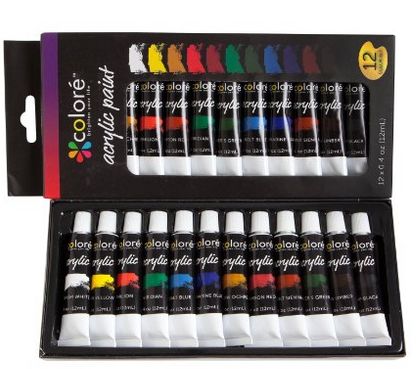Remember once you were in elementary school and painting seemed so simple since your teacher just handed you art supplies and helped wash brushes afterwards? Approaching the medium like a more mature artist, you should learn about paintbrush materials and the ways to properly take care of your brushes.

First, you have to decide whether you will require soft or stiff hairs on your paintbrush. Either can be produced of natural hairs or synthetic fibers. A skinny paintbrush is perfect when you want to perform detailed work or precise painting. It enables that you spread paint easily. Hard bristles however are better for manipulating thick paint. This lets you create brush marks within the paint which can be seen for the canvas. Vincent van Gogh’s jobs are renowned for this system, as evidenced by his painting The Starry Night.
Most purists will claim that natural hair can be more advanced than synthetic fiber due to its flexibility and strength. The head of hair for paintbrushes comes from animals including Sable, squirrel, hog, camel, ox, pony and goat. If the thought of using hair from of such animals making you squeamish otherwise you have ideological issues with this, don’t fear: modern paint attended quite a distance and are even less expensive than their natural hair counterparts.
The next phase is to master somewhat about paintbrush anatomy. The handle is generally manufactured from wood and is called the ferrule. This sports ths hairs or bristles. The top from the bristles is called the toe.
When deciding which paintbrush for doing things is very important to know the dimensions of the brush. This could be based on taking a look at a number along the side of the handle. The tiniest dimensions are 00 accompanied by 0, 1, 2 etc. If you’re buying online it is important to go to a picture from the brush you’re purchasing. Two brushes sized the same can be completely different due to the variety of bristles and the width in the handle. This problem could be alleviated in the event you shop in a actual store or are already familiar with the company of brush.
It requires a lot of time and cash to have the right paintbrush, therefore it is practical to keep up them, which include proper cleaning after each use.
Before you get started, be sure to have soap (or turpentine if appropriate) and several tissue. You will also need lukewarm water plus a destination to dry your brushes.
Wipe over excess paint utilizing a soft cloth or tissue. Then, rinse your brushes in turpentine if you are using oils, but use lukewarm water if you are paint is water-based. Domestic hot water could cause the hairs of one’s brush to drop totally out. Afterwards, gently wash your brushes with mild soap. Repeat all over again as many times as necessary until no color is released and your brush returns to the original color. Next rinse your paintbrush in water that is clean. Make sure you shake off the excess water after this. If the brushes seem misshapen, use your fingers to gently bring the brush return to the original shape.
You now you will need to dry the paintbrushes. Wrap the bristles in tissue or mouthwash when they are wet. Once the bristles dry they’re going to contract like this and will maintain their shape. Allow brushes dry at 70 degrees. Be sure not to rest them on the head as this is another potential hazard to maintaining appropriate shape.
For details about painting canvas check this web site: click here
